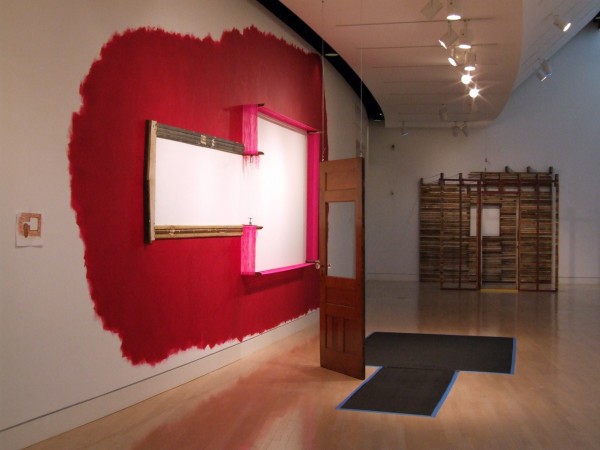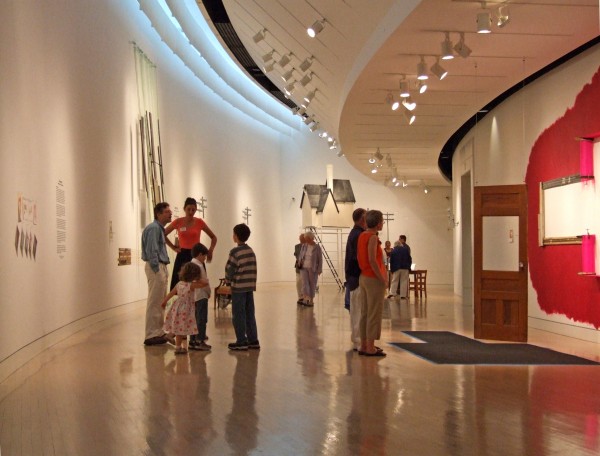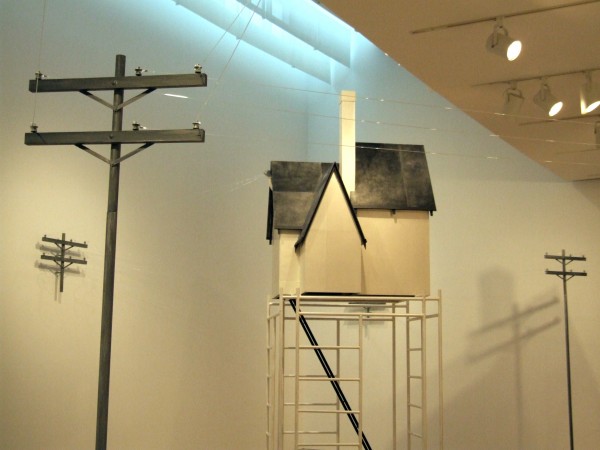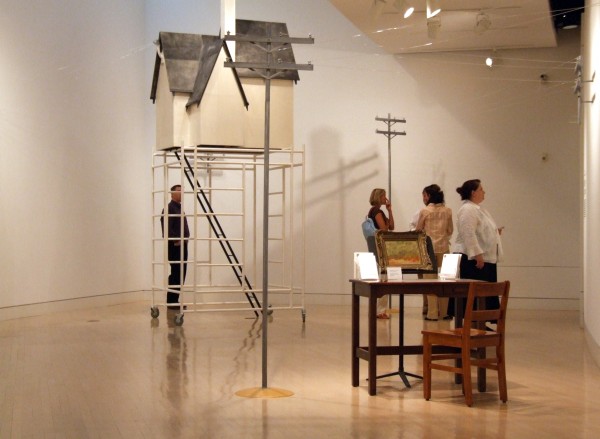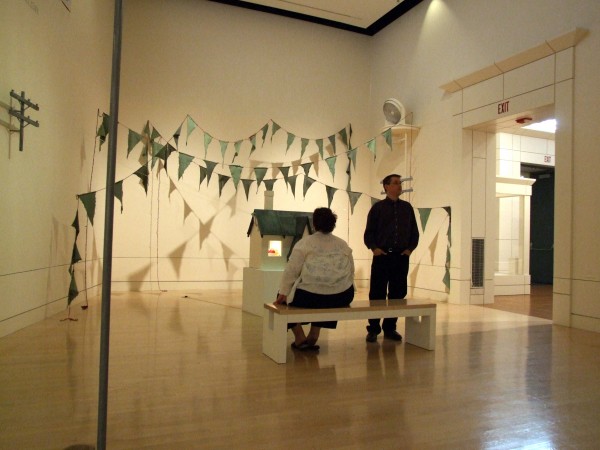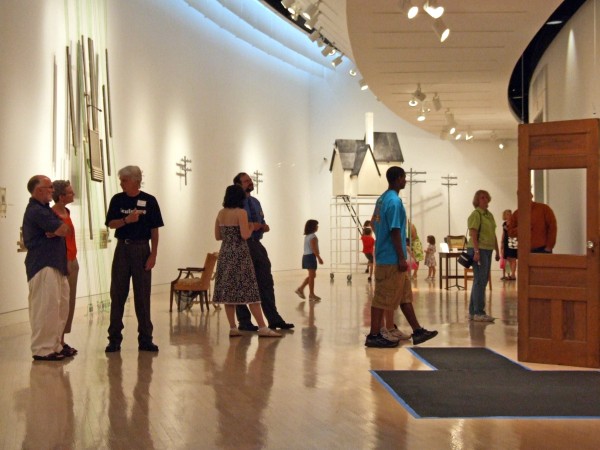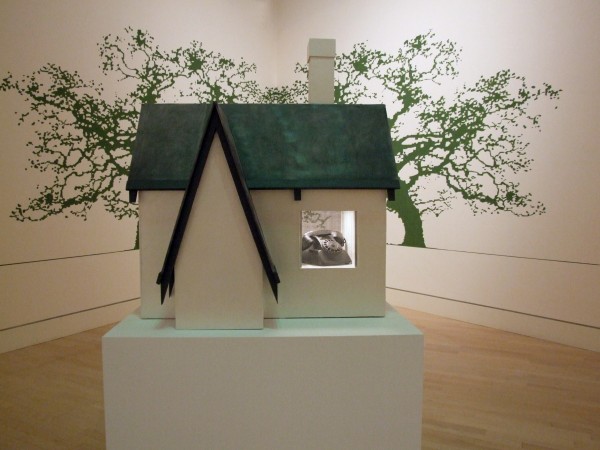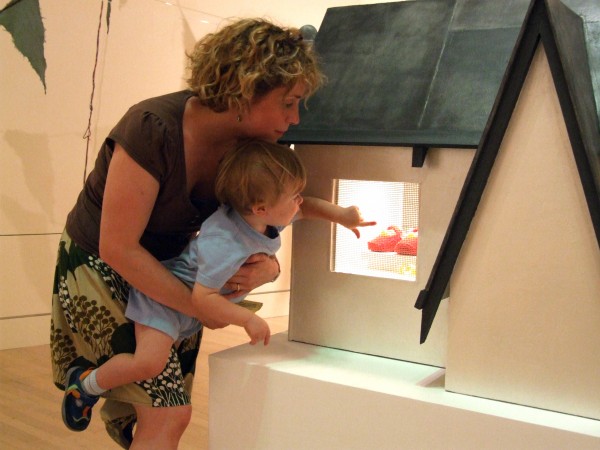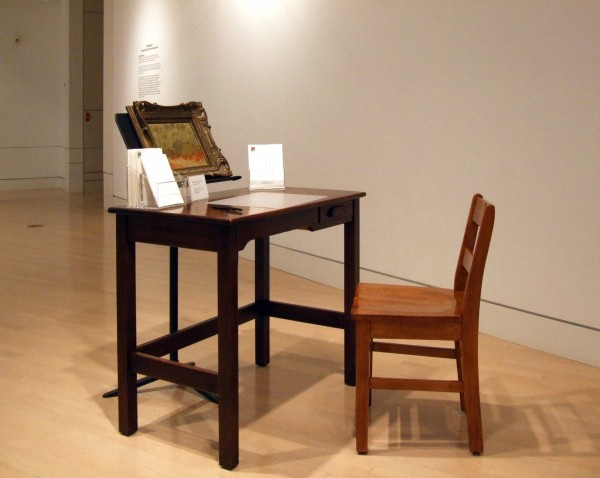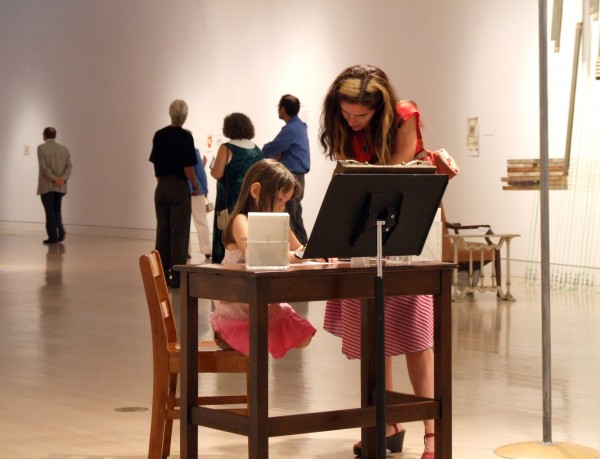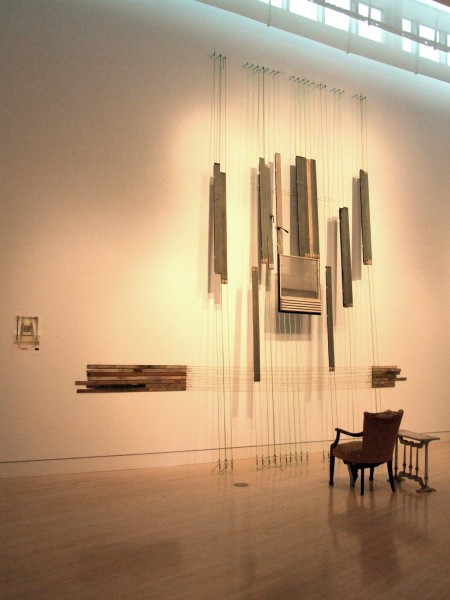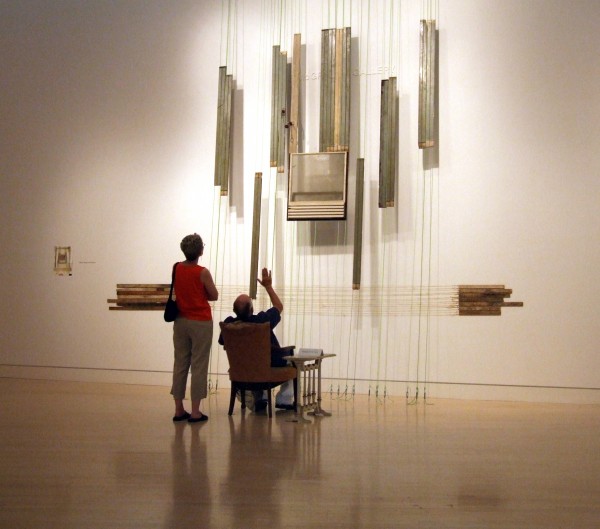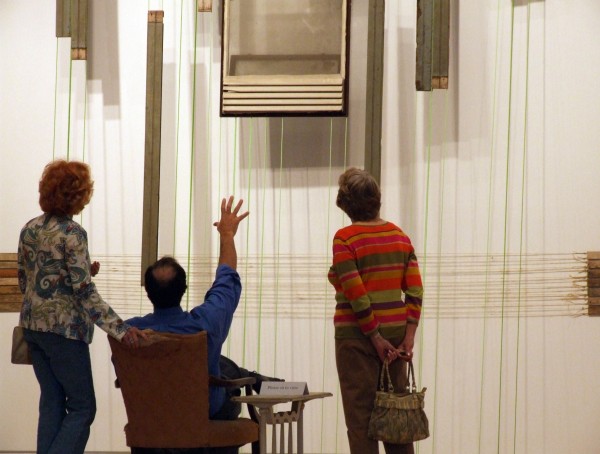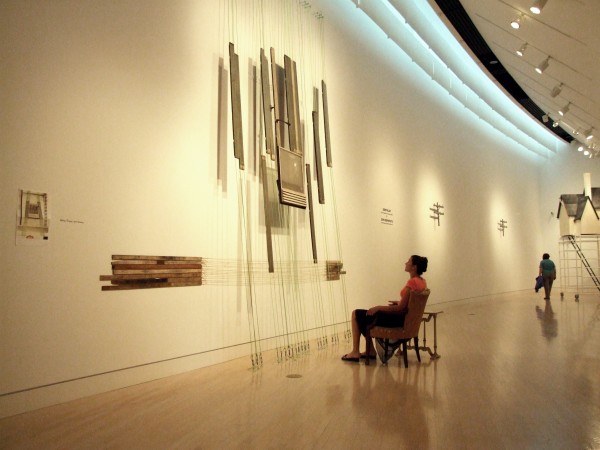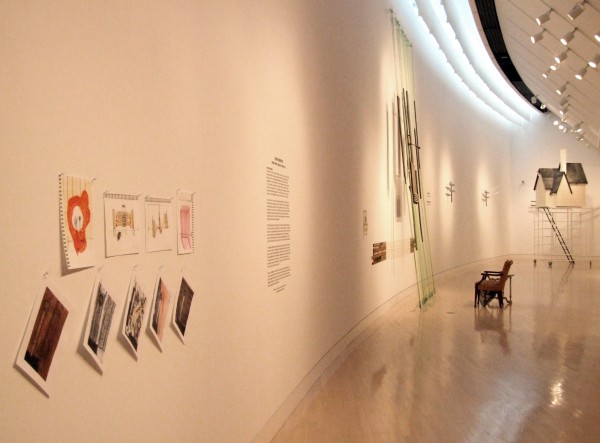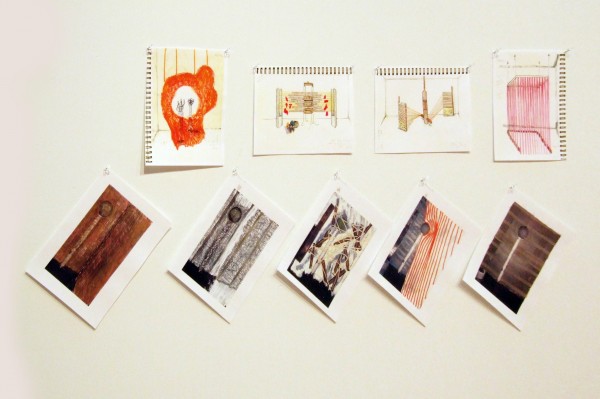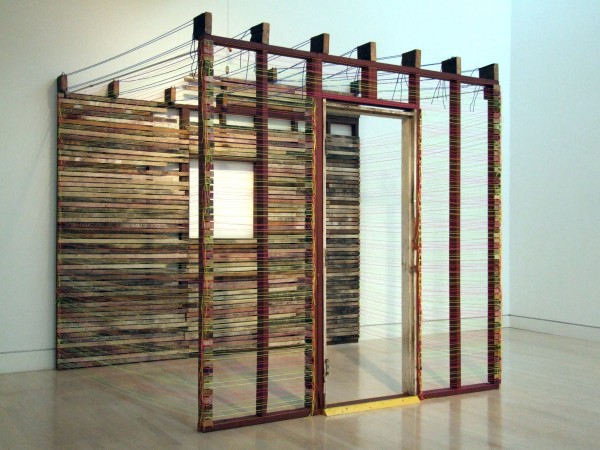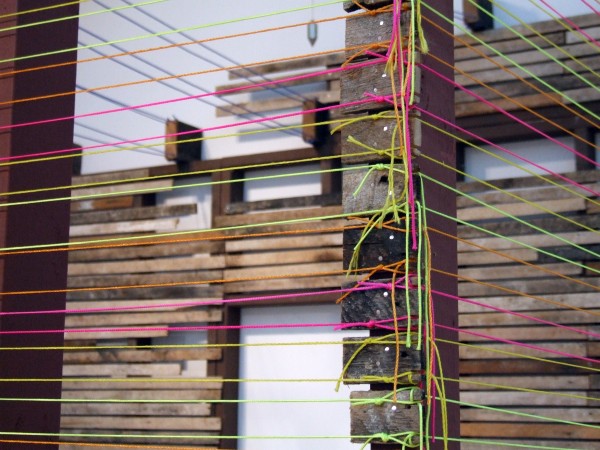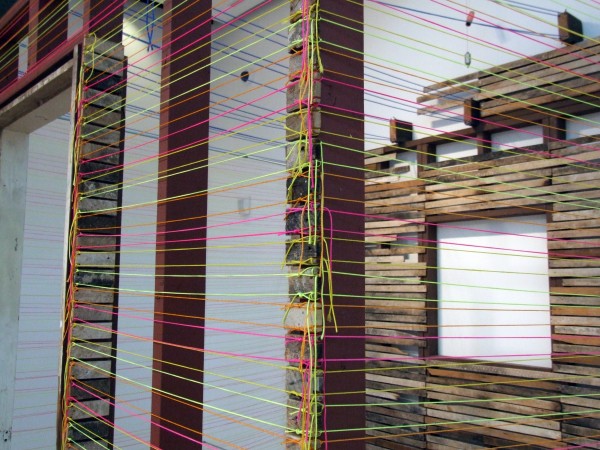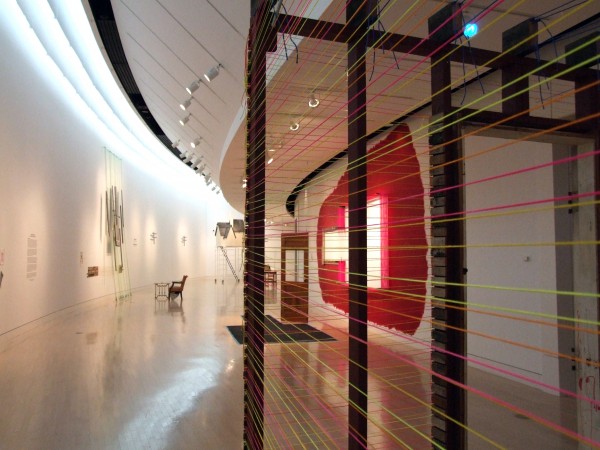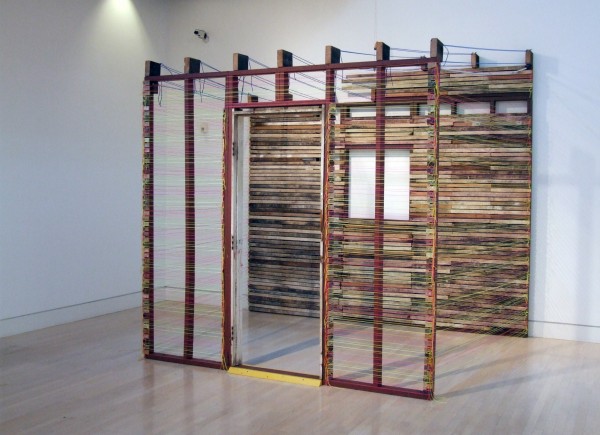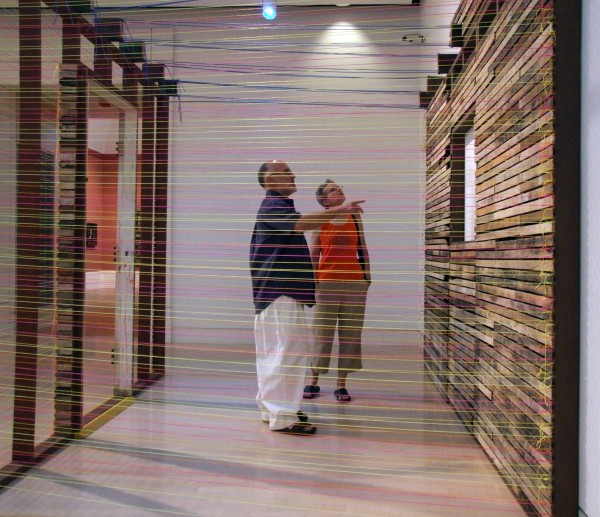Installations by Xan Palay and John Benvenuto
Jul 8-Aug 26, 2006 John Benvenuto: String Theory – Spaces to Believe InAs essence of my current sculpture installation is the creation of an architecture within gallery spaces that has a seductive physicality within its myriad boundaries. These structures are full of usually hidden passageways that can be entered – literally or imaginatively – as well as looked into. This series of illusionistic interior spaces and sites are, by their nature, chameleon-like in their ability to reflect or embody the visitor's memory, fantasy, longing or fear. In contemporary physics and cosmology, string theory posits multiple simultaneous galaxies. My use of string structure here is more than punning as I present installations that evoke as many realms as there are visitors.
The prominent use of mason's line (polychrome nylon string) or colored light rope is a deliberate device to prompt visitors into acts of completion. I disrobe the opaque and de-materialize plank, plaster, and brick to reveal the structures we live in. By limning edge, plane or mass in string or rope (line) and/or scrim, architecture and its materiality is stripped down into essence, a state in which the viewer is enabled to redefine or redraw the space for him or herself. In this personal participation the viewer becomes the subject as the visitor becomes inhabitant.
The string/rope (and at times netting or scrim) exists on many literal and metaphorical levels: as a proscenium curtain through which the museum visitor travels in a self-guided quest (yes, but also simultaneously as connective line/lines of affinity); as a tie that binds (viewer to architecture); as representing plane and mass; as lines of force/stress or support. These boundaries seek not to divide but suggest permeability and a path for transit. What had been floor, wall and ceiling can be entered and exited simultaneously.
By rebuilding substantial parts of public space in string/rope/scrim this artist intends for the viewer to rebuild, with imagination and empathy, these structures as personalized space. At some junctures the subtext asks, "How does it feel to be a building?" In each personal metaphoric action of completion or rearrangement in which the viewer engages are gestures of memory and fantasy: this is a moment for the self to migrate into architecture, into space, into materiality. By "opening up" mass with these materials, room is made for the visitor to move in(to).
Now, as an inhabitant, one can believe in the confluence of architectural interior and one's inner construction of who he/she is and where he/she has been. My quest and the viewer's parallel narrative are a focus on the person, his/her history, bodily presence, thoughts and feelings. I am intrigued by an art that is invested in a humanist, non-ironic realm of imagintaion, memory and desire.
"Whatever we believe in, we create a space there." – Montien Boonma, Thai sculptor
